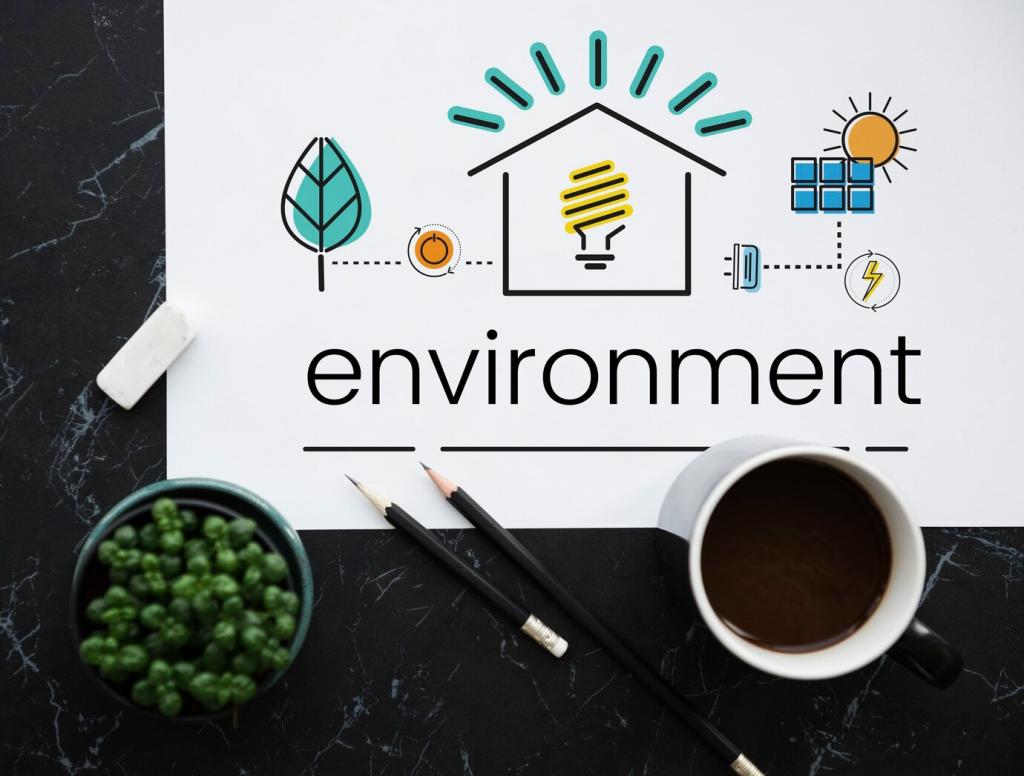Sustainable Furniture Maintenance Tips: Keep What You Love, Waste Less
Chosen theme: Sustainable Furniture Maintenance Tips. Welcome to a home page dedicated to caring for the pieces you already own—using mindful methods that save resources, money, and memories. Explore friendly, practical guidance that keeps furniture beautiful for years, while inviting you to share your wins and subscribe for eco-smart care routines.
Know Your Materials
Sustainability starts with understanding what you have: solid wood, veneer, metal, glass, or upholstery blends. Labels like FSC-certified wood and OEKO-TEX fabrics guide safer choices. When you know the material, you choose gentler cleaners and smarter fixes, preventing damage and keeping pieces in use for many extra years.
Clean Smarter, Not Harsher
Skip aggressive chemicals and start with the mildest approach: soft microfiber, diluted castile soap, and distilled water. Gradually increase strength only if needed. This protects finishes, avoids indoor air pollution, and keeps runoff safer for waterways. Want simple recipes and dilution ratios? Subscribe for our evolving, reader-tested cleaning toolkit.
Routine That Prevents Waste
A predictable rhythm beats emergency fixes. Dust weekly, spot-clean immediately, and schedule a seasonal check for loose joints, wobbly legs, and dry finishes. Small, frequent attention reduces big interventions and landfill trips. Tell us which reminders help most, and we’ll tailor future checklists to your home and habits.
Wood Wisdom: Low-Impact Care for Timber Pieces
Nourish with Plant-Based Oils and Waxes
For unfinished or oil-finished wood, consider polymerized linseed, hemp oil, or a carnauba-based wax for durable sheen with fewer solvents. Apply thin coats, buff patiently, and avoid build-up. Choose low-VOC products and reuse lint-free rags safely. Share your favorite finishes, and we’ll compile a community-sourced guide.
Mind the Microclimate
Wood prefers steady humidity—often around 40–55%—and gentle temperatures. Sunlight fades finishes and dehydrates fibers, so rotate pieces and use curtains as needed. Keep distance from radiators and vents. A small hygrometer is a big ally; comment if you’d like our printable humidity tracker and placement tips.
Scratch and Dent Triage
Not every mark needs sanding. Try a blending pencil, matching shellac stick, or a light wax fill for shallow nicks. Clean the area first, work minimally, then seal. Embrace patina where it tells a story. Have a before-and-after repair? Share it, and inspire others to fix rather than replace.
Fabric and Upholstery: Gentle, Green Cleaning
Blot, don’t rub, using a white cloth and cool water first. Club soda helps with fresh spills; mild soap can follow. Baking soda lifts odors on dry fabrics. Always spot-test in a hidden area. Tell us tough-stain stories you’ve solved, and we’ll feature reader tricks in next week’s update.


Fabric and Upholstery: Gentle, Green Cleaning
Steam is powerful when used lightly, especially with distilled water to avoid mineral spotting. Ventilate while drying to deter mildew. Avoid heavy fragrance sprays that mask issues and add chemicals. If you’ve tried enzyme-based cleaners on natural fibers, comment your results to help refine our recommendations.


Metal, Glass, and Composites: Sustainable Shine
For steel, start with fine wool or a gentle rust eraser, then protect with microcrystalline or plant-based wax. Brass and copper respond to mild lemon-and-salt paste, but avoid over-polishing historical patina. Share your metal type and finish, and we’ll suggest specific, low-impact routines in future posts.
Metal, Glass, and Composites: Sustainable Shine
Mix equal parts distilled water and white vinegar, then wipe with a clean, tightly woven microfiber cloth. Avoid paper towels that shed lint. For stuck-on residue, soak briefly rather than scraping. Tell us your streak-free techniques, and we’ll test them in a side-by-side, eco-cleaning comparison.
Repair Culture: Fix Before You Replace
Adhesives and Joinery that Last
Tighten mechanical joints first, then choose the right glue: reversible hide glue for antiques, PVA for modern repairs. Clean old adhesive, clamp with gentle pressure, and allow proper curing time. Share your favorite clamps or jigs, and we’ll assemble a minimalist, planet-friendly repair kit list.




End-of-Life with Dignity: Circular Choices
Before parting ways, consider a new finish, a slipcover, or changing hardware for a radically fresh look. A weekend of sanding and oiling can replace a purchase. If you’ve transformed a tired piece, share your process and encourage others to try sustainable makeovers.

A Short Story from the Workshop
I found an oak chair on a curb, sun-bleached and wobbly. Tightened the tenons, repaired a split with hide glue, then fed the wood with tung oil. Weeks later, it hosted our Sunday tea. If you’ve rescued a piece, share a photo and the technique that made the difference.
Your Turn: Share a Win
Tell us one sustainable furniture maintenance tip that surprised you—maybe a gentler cleaner, a smarter routine, or a careful repair. Comment below, and subscribe so we can spotlight your advice in a future issue, crediting your first name and city to inspire more mindful maintenance.
Subscribe for Next Week’s Checklist
We’re assembling a printable, month-by-month Sustainable Furniture Maintenance Tips checklist covering wood, fabric, metal, and composites. Subscribe now to receive it first, plus seasonal reminders, reader success stories, and low-VOC product picks vetted for durability and minimal environmental impact.
